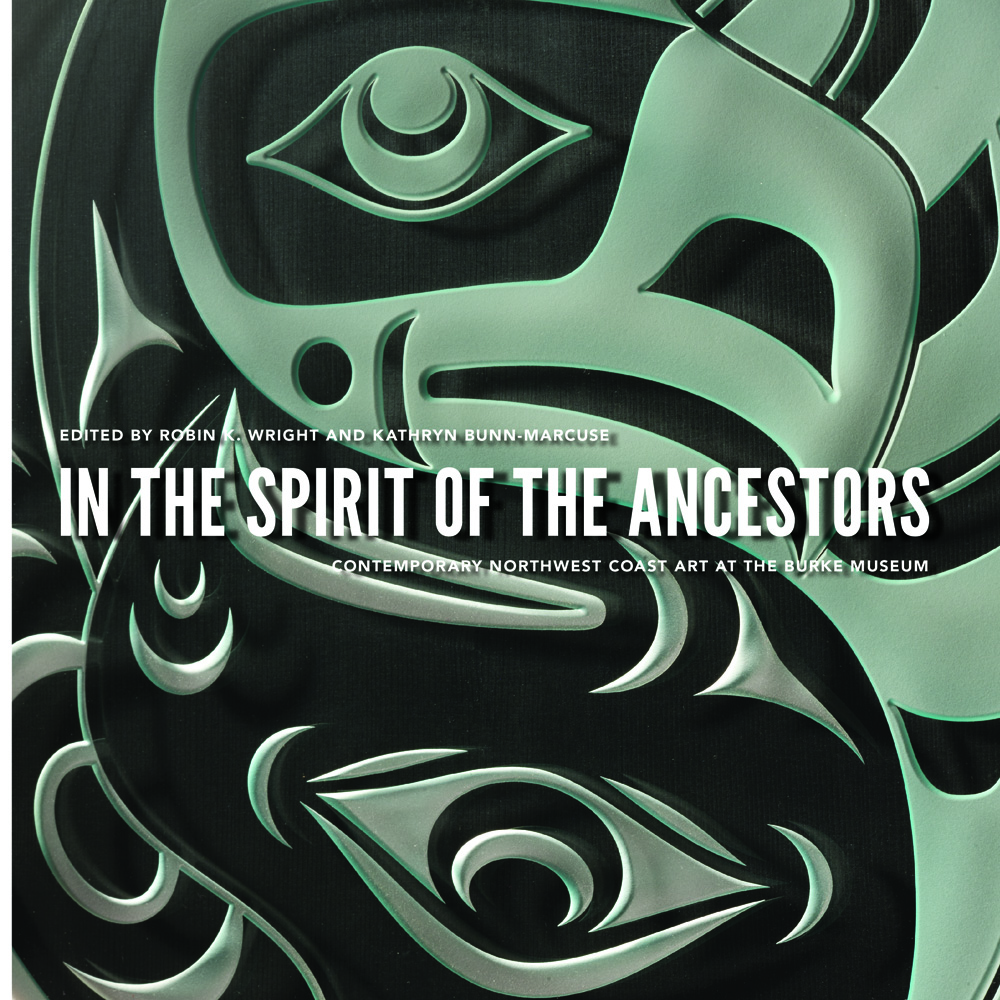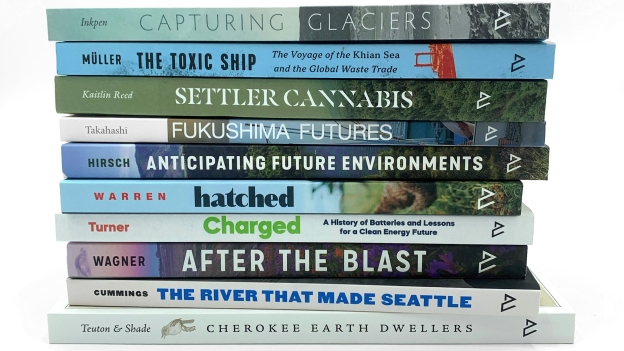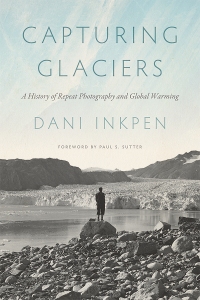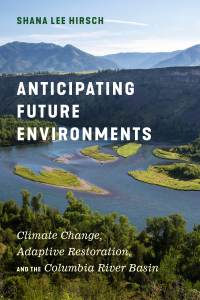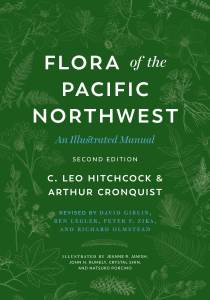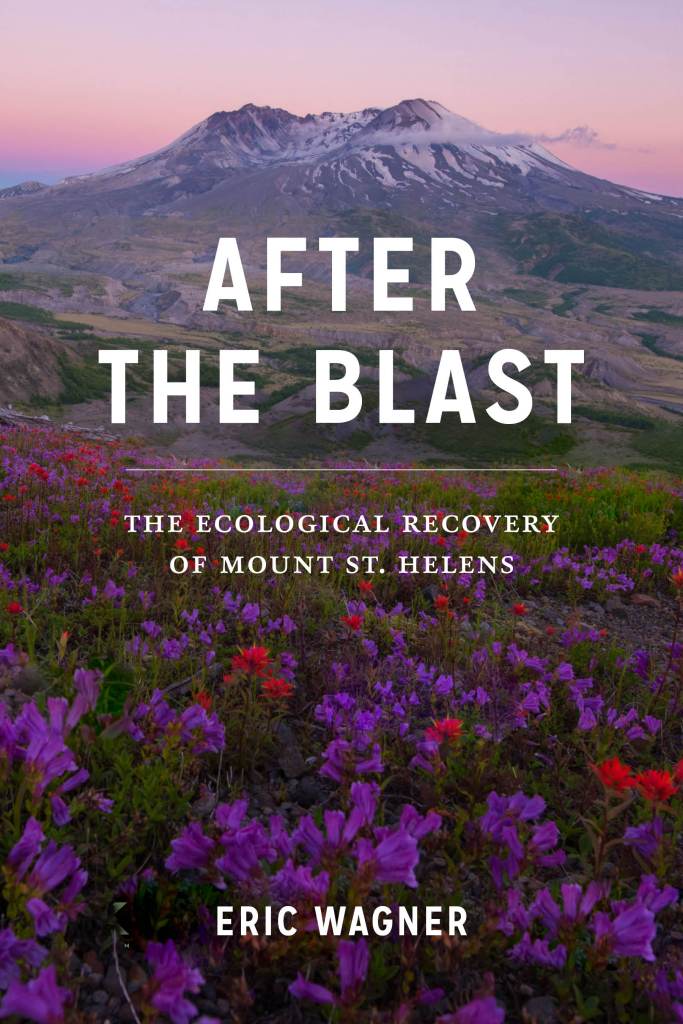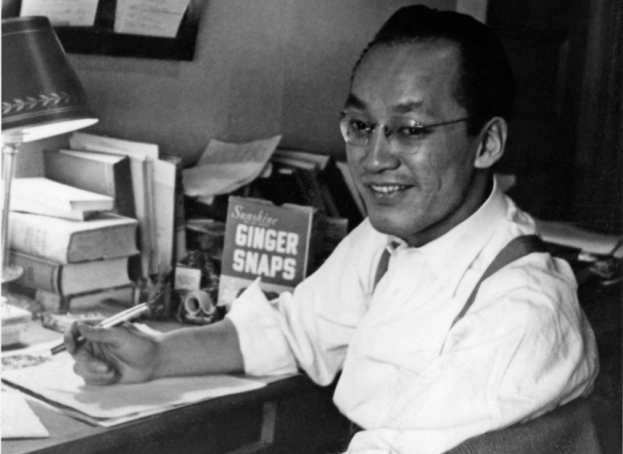Based on over twenty years of collaborative research with the Skidegate Haida community, Skidegate House Models by Robin K. Wright features vital cultural context on the Skidegate model village carved by Haida artists for the 1893 Chicago World’s Fair. While promoters of the Chicago World’s Fair used the village to celebrate the perceived “progress” of the dominant society, for Skidegate residents it provided a means to preserve their history and culture.
After the exposition, the models went to the Field Museum of Natural History and many were dispersed from there to other collections, but fourteen of the model houses have not yet been located. The book provides extensive archival information and photographs that contextualize the model village and might help locate the missing houses while offering valuable insights into Northwest Coast art history. The following is an excerpt.
From the Foreword by Jisgang, Nika Collison
My name is Jisgang, I belong to the Ḵaay’ahl Laanas clan. Gaahlaay is my chief. My mother is Gid Ḵuuyas, my father was Skilay. I grew up in HlG̱aagilda Llnagaay Skidegate Village. I am one of the last generations to receive the smallpox vaccine. I was five or six when I got it. My mom explained the shot would really hurt, and probably scar a lot, showing me hers. She explained why I needed it. That is how I learned my village should have been much bigger than it was.
In 1862 colonizers purposefully introduced smallpox to the Northwest Coast, killing hundreds of thousands of Indigenous people and almost annihilating some Nations, including the Haida.1 Survivors in northern Haida Gwaii migrated to G̱aw Tlagée Old Massett in order to survive. Chief Skidegate welcomed southern survivors into the village of HlG̱aagilda. Haawa Kilslaay, sah uu dang G̱iida. Before the smallpox epidemic we had successfully kept colonists from our territories. In 1867 the colonial state of Canada was formed, with assigned authority over “Indians and Lands reserved for Indians.”2 In 1876, Canada legislated the Indian Act, which was so effective it informed parts of Apartheid. The year 1876 is also the year missionaries arrived on Haida Gwaii. They shamed and prohibited our ways, often forcing the destruction, sale, or handing-over of our belongings. Desecration of our Ancestors’ graves would soon follow “in the name of science.” Around 1883, Canada and the Church joined forces to create the horrific Indian Residential School System, which operated for more than one hundred years. In 1884, Canada legislated the Potlatch Ban, which criminalized the legal system of the Northwest Coast from 1885 to 1951. Offenders faced seizure of belongings and up to six months in jail. A final mass exodus of our Ancestors’ belongings and funerary remains would follow.

In other words, we were thirty years into the genocide of the Northwest Coast when James Deans traveled to Skidegate to commission a model village for the Chicago World’s Fair. [Robin K.] Wright notes that when Deans arrived, there were only about eleven poles and three longhouses still standing in Skidegate (families were largely living in colonial-style homes). Fourteen years prior, almost eighty poles of varying purpose stood in Skidegate. Deans directed artists to use an early photo of Skidegate to create their replicas. The end result was a massive model village that, while commissioned during times of duress, was built on our peoples’ own terms. It was sent to the World’s Fair along with a large collection of our peoples’ belongings, including a real-life pole, house, and canoe. When the fair ended, the village and greater collection were split up and dispersed willy-nilly around the world, far away from Haida Gwaii.
Our Ancestors did everything they could to preserve our Haida-ness. Each subsequent generation has been dedicated to the same. For decades we have been piecing ourselves, our clans, and our villages back together the same way Dr. Wright pieced the Skidegate House models back together.
Jisgang, Nika Collison
About 120 years later, Dr. Robin Wright started to piece the village model back together. For more than twenty years she searched the globe tracking down the model houses and poles; scoured archives to sort out the work of early anthropologists, photographers, missionaries, government agents, and museums; and worked with our people to sort these findings out further, along with working on Haida language, genealogies, privileges, and histories. The findings were woven together into this precious book. In piecing back together as much of our model village as she could, Dr. Robin Wright has not only created a fascinating body of critical research, she has assisted our Nation in our greater plight: piecing ourselves back together.

Several years ago, I was listening to a radio program on strategies of war and the annihilation of a people. In addition to destroying lives, destroying heritage was a critical tactic. Shatter identity so that the survivors don’t know who they are, where they come from, or their place in the world. I was born in 1971. The population of Skidegate numbered fewer than three hundred people. Growing up, we were called “Indians” and our home, the “Queen Charlotte Islands.” I lived with my grandparents behind the only pole left standing in our village.3 Part of my family lived “off reserve” and part off island, disenfranchised from their community through colonial regimes. Haida was rarely spoken, if at all. The were no masks, dance blankets, songs, or dancing. I didn’t have a proper name. Many didn’t. It was all silenced—hidden away in minds, archives, museums, and behind closed doors.
That was for the first few years of my life. I also grew up during a time of great cultural and political revitalization. Despite massive population loss and colonial regimes, our Ancestors preserved as much Haida knowledge as possible by employing subversive tactics and by working with anthropologists and other foreigners to record our knowledge. We started coming back out through the art, through the poles. I was seven when I witnessed the first pole to be raised in Skidegate Village in almost one hundred years, the Skidegate Dogfish Pole. Carved by my chinaay grandfather Iljuwas Bill Reid, the pole was raised in 1978, in front of the first longhouse to be built in Skidegate since the late 1800s, with a great community potlatch.4 A similar event had happened nine years earlier in the village of Old Massett, when Robert Davidson gifted his community a pole to raise. These events awakened much more than I think either artist anticipated.
My children are Haida, not Indians. They live on an archipelago called Haida Gwaii. The population of Skidegate is nine hundred strong, and more than five thousand as a Nation. My children have proper names, given in potlatch. They have attended many pole raisings in their lifetime, wearing their regalia. They are learning and growing up in the art, the language, the culture, the land and water. They are learning their family ties and their clan and nation histories. They were Haida singing and dancing in the womb.


Gudgiikyagangs, “People call to each other
in it,” 1892, made by Niislant, John Cross,
110 cm × 11 cm × 13 cm. Courtesy of the
Field Museum, cat. no. 17802. Photograph
by Gail Specht.
Today there are sixteen poles of varying purpose standing throughout Skidegate.5 My clan is readied for a memorial pole-raising in September 2022, and by the end of 2023, four new carved house posts will be standing at Xaaynang.nga Naay, the Skidegate Health Centre. There are nineteen poles in G̱aw Tlagée Old Massett, the most recent being raised in August 2022, marked by a two-day potlatch hosted by Christian and Candace White (Yahgu Jaanas/Laanas clan) in Old Massett. And more recently, in October 2022, a memorial pole was raised for Tlajang nang kingaas, Benjamin Ray Davidson.
We might be a far cry from eighty poles standing in Skidegate alone, but we are also a far cry from one pole left standing. Our Ancestors did everything they could to preserve our Haida-ness. Each subsequent generation has been dedicated to the same. For decades we have been piecing ourselves, our clans, and our villages back together the same way Dr. Wright pieced the Skidegate House models back together.
Like Dr. Wright’s restoring of our model village, the restoration of our world is not fully complete. Not everyone and everything has been located or gathered. There could even be a correction down the road. But we are still here—we are Haida—and we know our place in this world. My friend’s book is an important contribution to this journey. So many years of working with our people to bring critical stories together under one roof. So many names, clans, genealogies, houses, and poles reunited. When I hold this book, I am holding a part of myself, my family, our community, our Nation. When I hold this book, I am holding a part of our past, present, and future, all at the same time.
Haawa to my friend Robin for your respect, passion, and scholarship. Haawa to Haida Gwaii, our home. Haawa to the Ancestors, without your determination we would not be here as Haida. Haawa to our knowledge holders and scholars who scour their minds and the earth to gather the knowledge our Ancestors preserved. Haawa to the Supernatural, who help guide us in this work.
Notes
- Not just smallpox but also TB, measles, and other diseases. ↩︎
- BC joined in 1871. ↩︎
- It was raised ca. 1884 by David Shakespeare for his wife, Jane, of the Saang.ahl Staastas; see Skidegate House Models chapter 3, Model Pole No. 17, for more on that pole. ↩︎
- The Shakespeare and Dogfish poles stood side by side for almost a decade before the Shakespeare Pole fell in 1989. The Dogfish Pole was taken down for conservation in 2014. Both now live in the Haida Gwaii Museum. The Longhouse served as the Skidegate Band Council Headquarters through the mid-1990s. In 1998 it became the HlG̱aagilda Xaayda Kil Naay Skidegate Haida Language House, home to the Skidegtae Haida Immersion Program (SHIP). ↩︎
- Haida Heritage Centre-6, Cheexial-1, Lydia Wilson-1, Gah Yah-1, Skidegate-1, Sk’aadGa Naay-1, Niis Wes-1, Cumshewa-1, WiiGanad-1, Unity-1, Gidansda-1. ↩︎
Robin K. Wright is professor emerita of art history at the University of Washington, Seattle, and curator emerita of the Burke Museum of Natural History and Culture. Her award-winning books include A Time of Gathering and Northern Haida Master Carvers. Recent books include In the Spirit of the Ancestors (coedited with Kathryn Bunn-Marcuse) and Charles Edenshaw (coedited with Diana Augaitis).
Jisgang Nika Collison belongs to the Ḵaay’ahl Laanas of the Haida Nation. She is Executive Director and Curator of the Haida Gwaii Museum at Ḵay Llnagaay and has worked in the field of Haida language arts and culture for over two decades. Deeply committed to reconciliation, she is a senior repatriation negotiator for her Nation, pursuing reparation and relationships with mainstream museums on a global scale.
Upcoming Events
Author Robin K. Wright will share more about Skidegate House Models and her community-engaged research in conversation with Nika Collison at the following events:
- Saturday, May 11, 2024, 7:00 pm PST at the Haida Gwaii Museum in Skidegate, B.C. Details here.
- Tuesday, May 14, 2024, 7:00 pm PST at the Burke Museum in Seattle, WA. Register here.
Related Books
